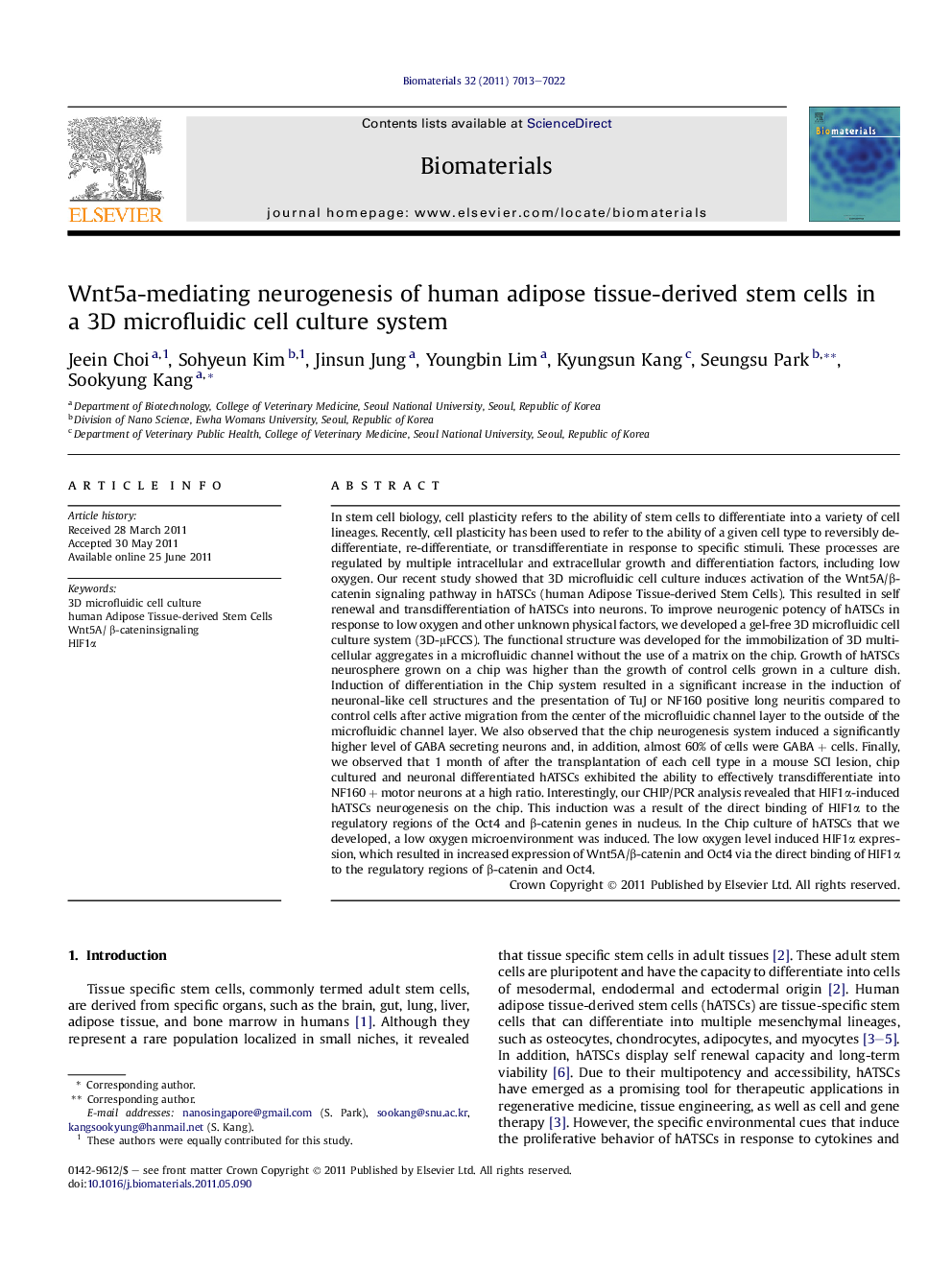| کد مقاله | کد نشریه | سال انتشار | مقاله انگلیسی | نسخه تمام متن |
|---|---|---|---|---|
| 7652 | 559 | 2011 | 10 صفحه PDF | دانلود رایگان |

In stem cell biology, cell plasticity refers to the ability of stem cells to differentiate into a variety of cell lineages. Recently, cell plasticity has been used to refer to the ability of a given cell type to reversibly de-differentiate, re-differentiate, or transdifferentiate in response to specific stimuli. These processes are regulated by multiple intracellular and extracellular growth and differentiation factors, including low oxygen. Our recent study showed that 3D microfluidic cell culture induces activation of the Wnt5A/β-catenin signaling pathway in hATSCs (human Adipose Tissue-derived Stem Cells). This resulted in self renewal and transdifferentiation of hATSCs into neurons. To improve neurogenic potency of hATSCs in response to low oxygen and other unknown physical factors, we developed a gel-free 3D microfluidic cell culture system (3D-μFCCS). The functional structure was developed for the immobilization of 3D multi-cellular aggregates in a microfluidic channel without the use of a matrix on the chip. Growth of hATSCs neurosphere grown on a chip was higher than the growth of control cells grown in a culture dish. Induction of differentiation in the Chip system resulted in a significant increase in the induction of neuronal-like cell structures and the presentation of TuJ or NF160 positive long neuritis compared to control cells after active migration from the center of the microfluidic channel layer to the outside of the microfluidic channel layer. We also observed that the chip neurogenesis system induced a significantly higher level of GABA secreting neurons and, in addition, almost 60% of cells were GABA + cells. Finally, we observed that 1 month of after the transplantation of each cell type in a mouse SCI lesion, chip cultured and neuronal differentiated hATSCs exhibited the ability to effectively transdifferentiate into NF160 + motor neurons at a high ratio. Interestingly, our CHIP/PCR analysis revealed that HIF1α-induced hATSCs neurogenesis on the chip. This induction was a result of the direct binding of HIF1α to the regulatory regions of the Oct4 and β-catenin genes in nucleus. In the Chip culture of hATSCs that we developed, a low oxygen microenvironment was induced. The low oxygen level induced HIF1α expression, which resulted in increased expression of Wnt5A/β-catenin and Oct4 via the direct binding of HIF1α to the regulatory regions of β-catenin and Oct4.
Journal: Biomaterials - Volume 32, Issue 29, October 2011, Pages 7013–7022